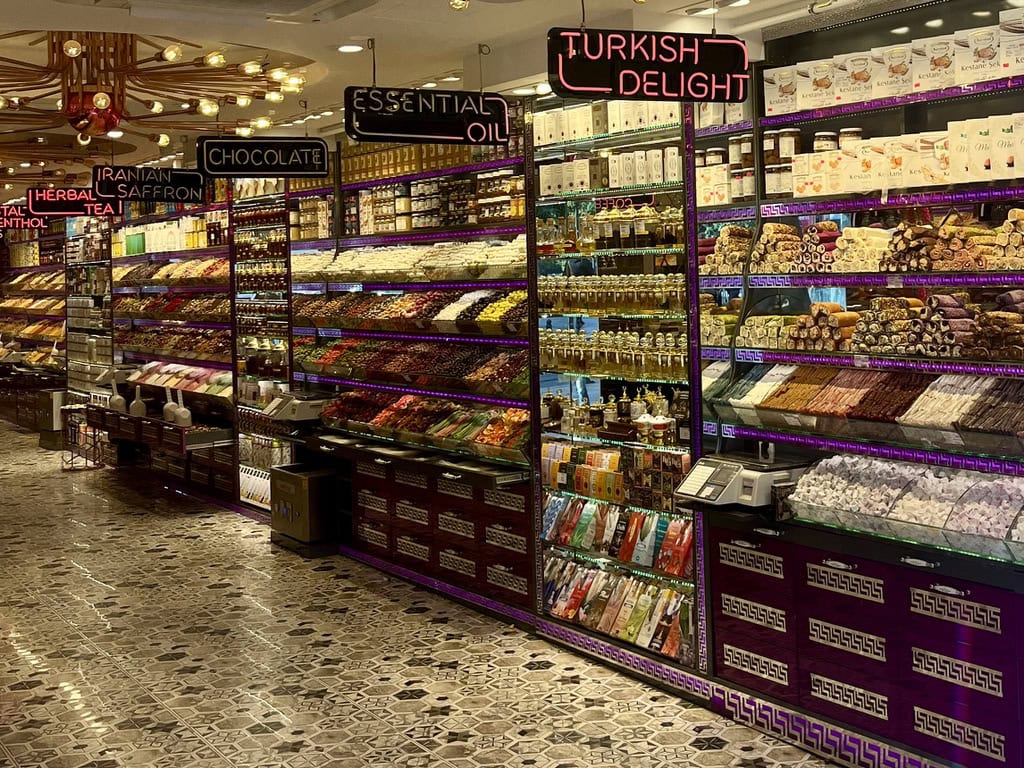Turkey Road Trip: 10 Days – From Istanbul to the Seaside
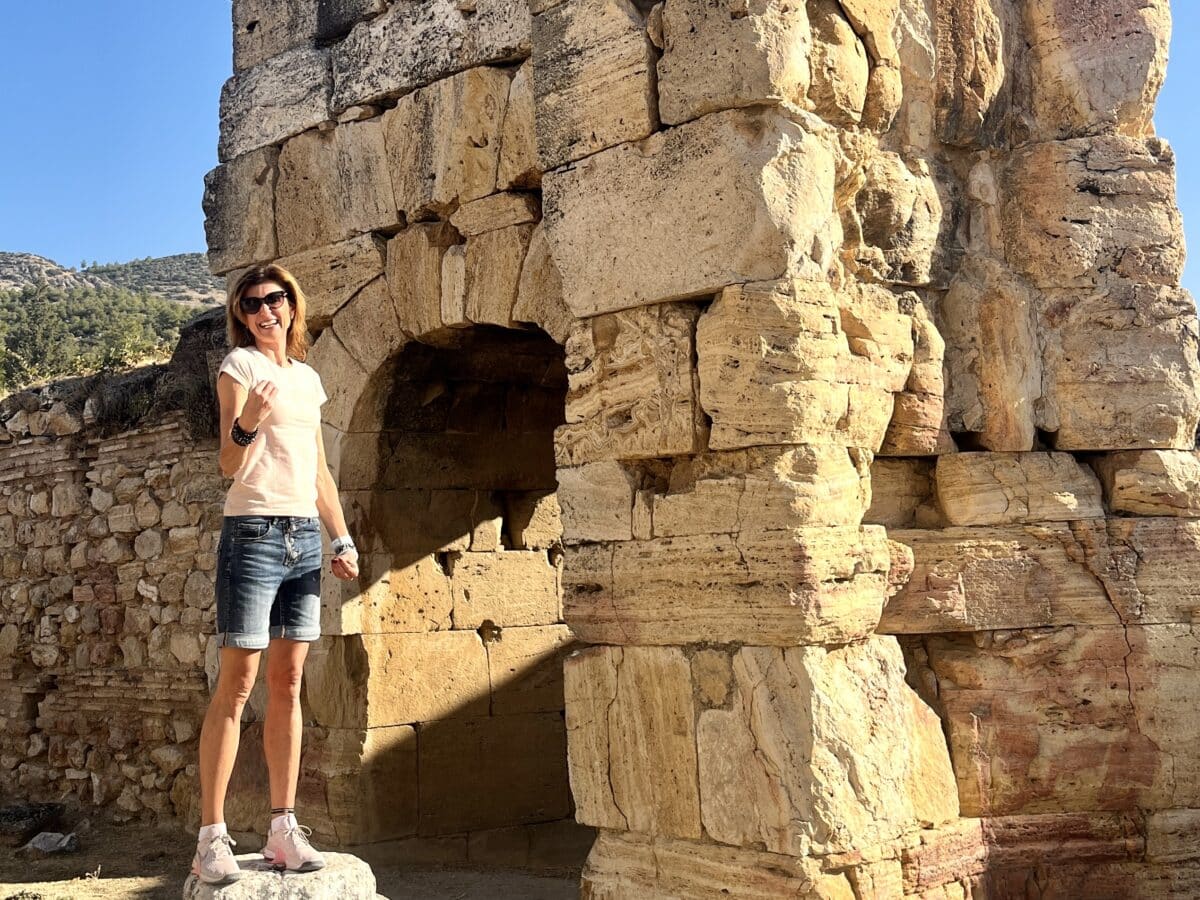
As every year, the end of October means it’s time for a road trip. This year, I decided to do the Turkey road trip or at least discover a certain part of this large country. When it comes to Turkey, many people think of Istanbul and beach resorts, but there’s so much more. While planning our 9-day itinerary, I quickly realized I would have to make choices.
Table of Contents
Practical considerations
Arrival in Turkey:
Turkey has numerous airports throughout the country, and we arrived at Istanbul International Airport. As Czech passport holders, we didn’t need a visa to enter. Checking visa requirements is always at the top of my list when planning any trip.
Uber Taxi:
Uber is available in Istanbul and is easy to book through the app right from Istanbul Airport, making airport transfers convenient and straightforward.
Currency:
The currency in Turkey is the Turkish Lira (TRY), and ATMs are widely available. Card payments are common and accepted almost everywhere, so I didn’t use cash at all during our visit.
Driving:
Driving in Turkey is straightforward and comparable to most EU countries. The area we traveled in has an impressive network of 3- to 4-lane highways, with petrol stations conveniently spaced. Each highway stop typically includes coffee shops and restaurants as well. Driving in major cities like Istanbul can be hectic, so staying alert is essential. I usually drive defensively, letting any locals in a rush pass by.
Mobile Data:
I always purchase an eSIM through the Airalo app before I travel. As soon as I arrive, I activate it and am all set with mobile data—no hassle of searching for a local SIM or swapping cards in my phone. It’s a quick and convenient solution.
Day 1: Landing in Istanbul
We landed in Istanbul on Friday evening, settled into the Old Edition Hotel, and headed to the nearest restaurant for dinner on our first night.
Day 2: Istanbul – Topkapi Palace, Karakoy district
The objective was clear: to start exploring the city sooner rather than later on Saturday. It proved to be the right decision.
Topkapi Palace
Our first planned stop was Topkapi Palace, located in the heart of old Istanbul. This residence of 24 sultans over four centuries is one of Istanbul’s top attractions. The complex is vast; you can easily spend half a day there and still not see everything in detail. We arrived just after the palace opened at 9 a.m., which turned out to be ideal. We managed to explore one of the key attractions, the Harem, before large crowds began pouring in. After two hours, we were overwhelmed by all the palace complex had to offer, and as we left, it was already packed with visitors.
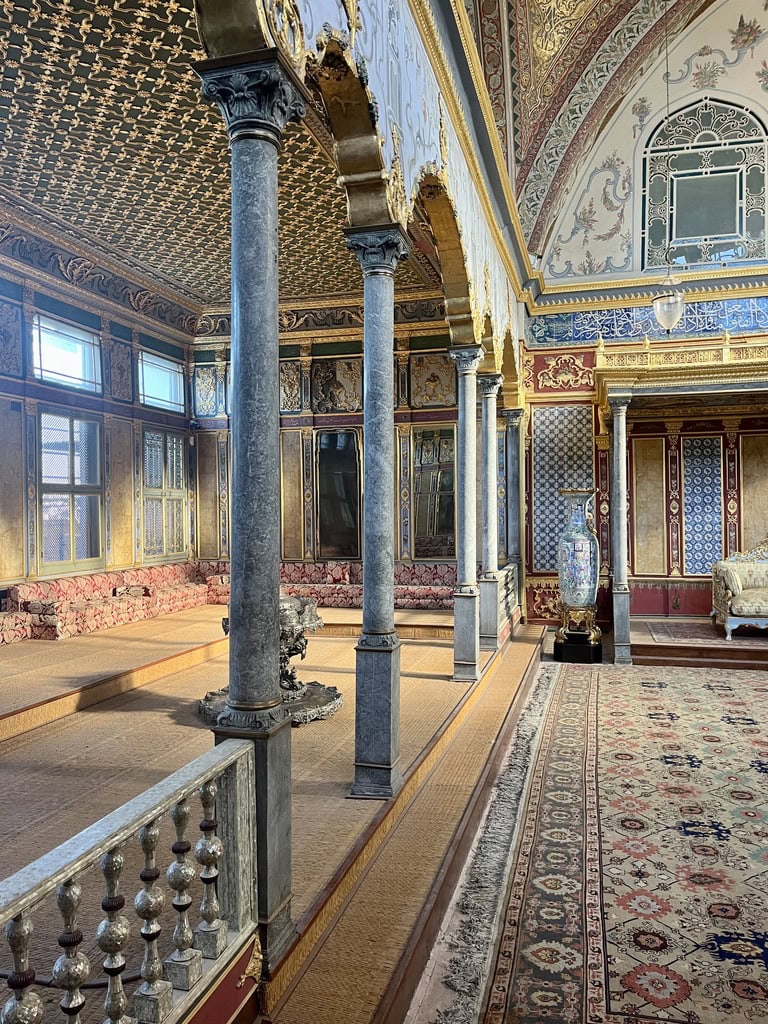
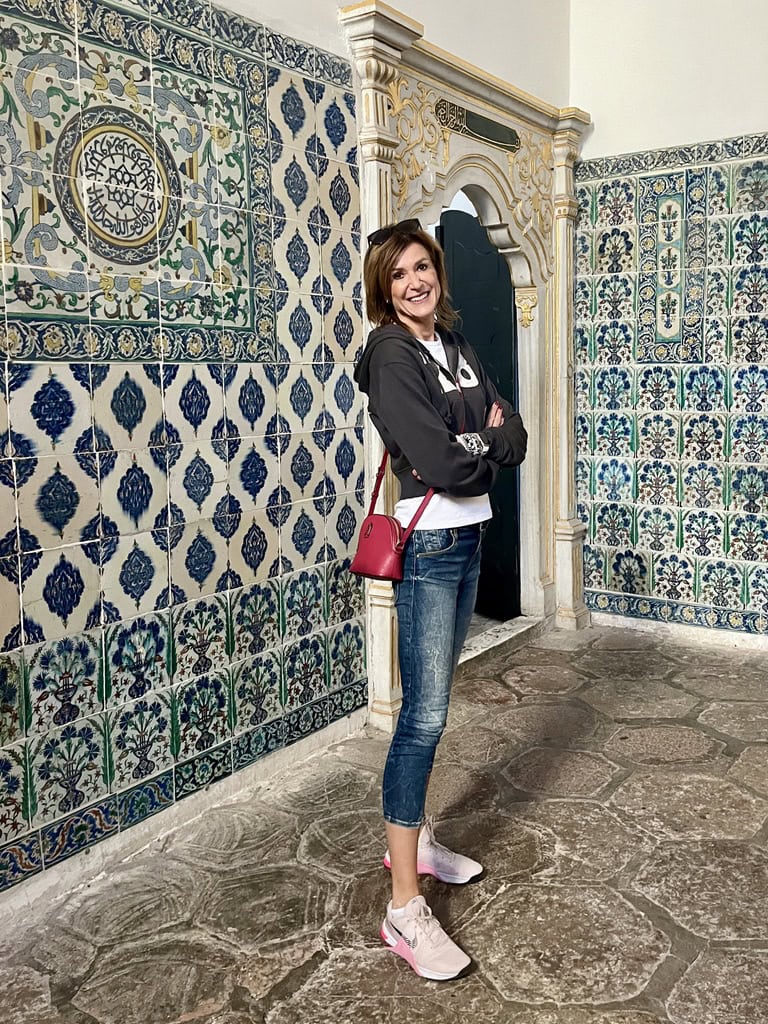
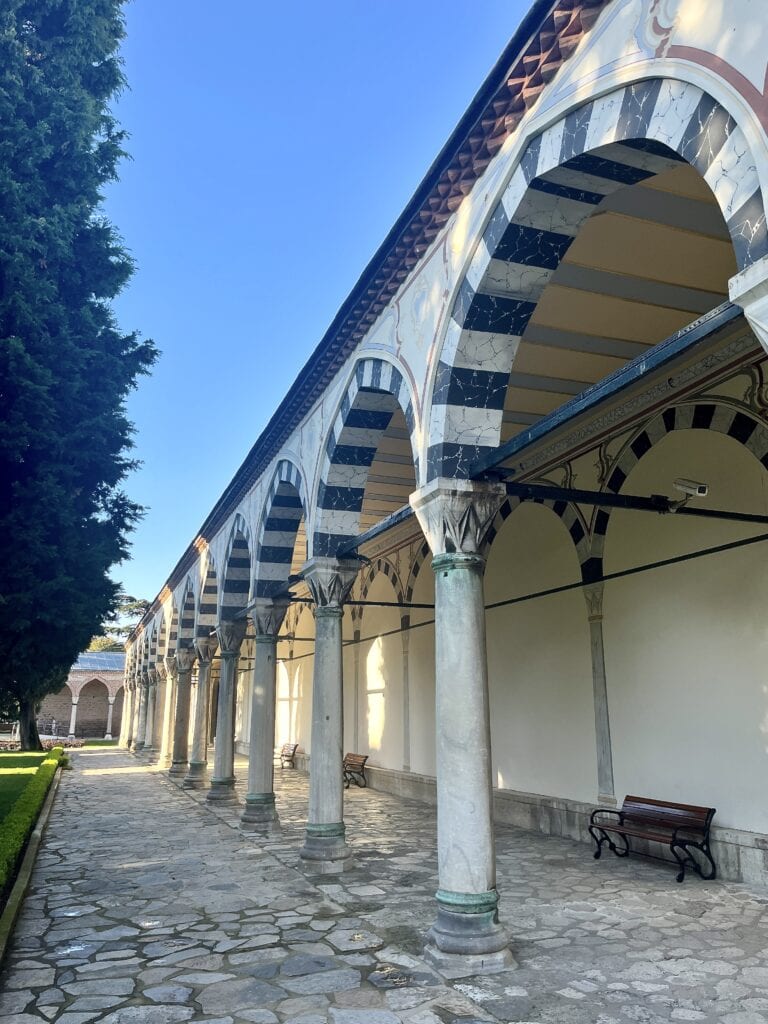
It was time for a coffee break and to decide our next stop. Originally, I had planned to visit more top attractions that day, but seeing the crowds, we decided to adjust our plans. There was another valid reason: the sheer amount of history at Topkapi can be overwhelming, and I wanted us to truly appreciate it. An easier afternoon plan felt just right.
Taksim Square, Galata Tower, Galata Bridge
We caught tram T1 from Sultanahmet to Kabataş, where we transferred to the funicular to reach Taksim Square. Many websites recommend purchasing an Istanbul Card and preloading it with credit for public transport, but this information is outdated. All tram and funicular entry gates now accept regular payment cards as well as the Istanbul Card, so it was easy to tap my card, and the fare was deducted. The tram costs 30 TRY, regardless of the number of stops, and the same fare applies to the funicular.
The funicular exit is in the middle of Taksim Square, situated in the Karaköy district. Established in 1930, it’s the largest square in the city. The main boulevard, İstiklal Caddesi, is full of shops, and the iconic red tram line runs through it. We spent time wandering around, browsing shops, enjoying lunch at a local restaurant, and eventually reached the iconic Galata Tower.
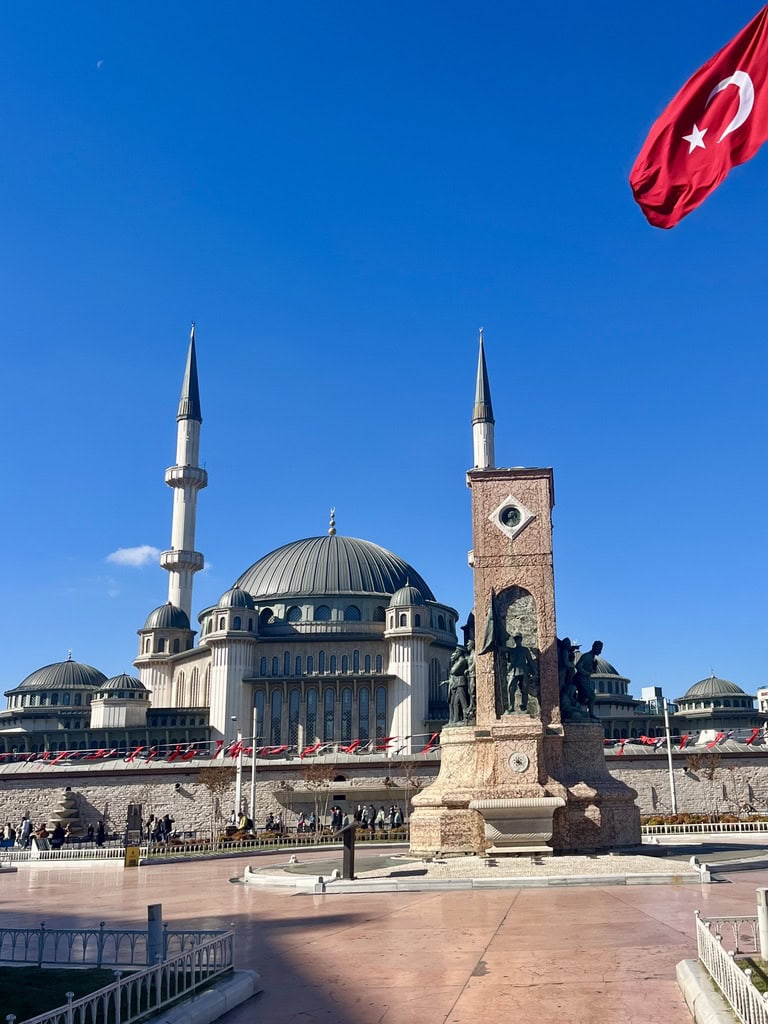
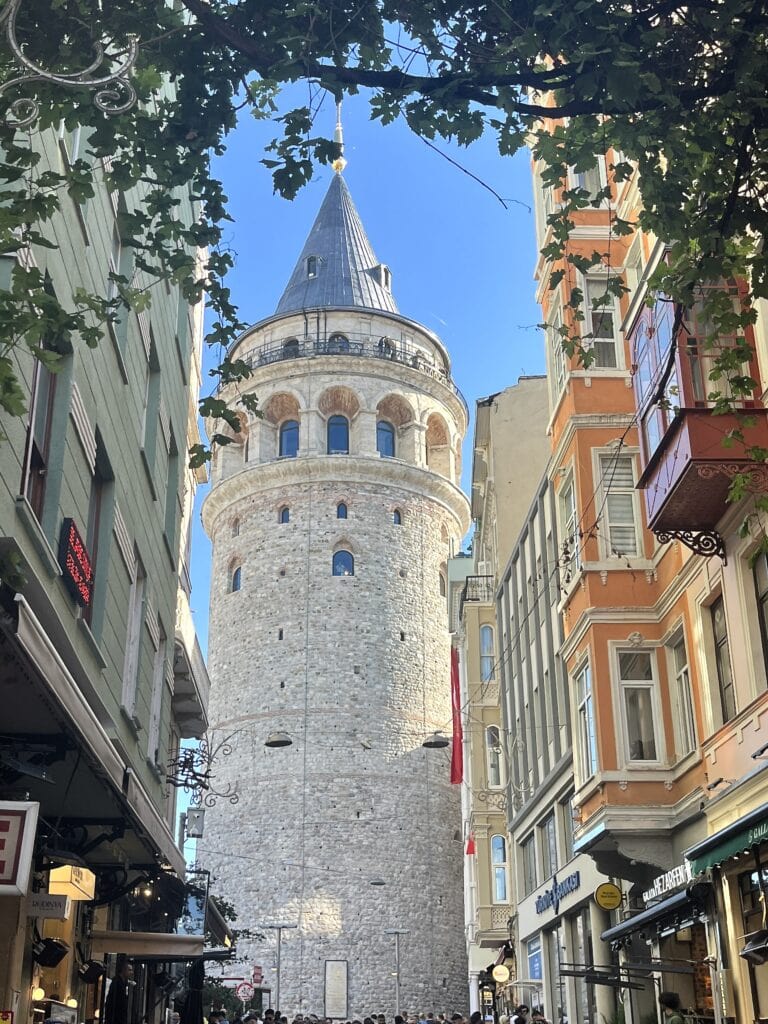
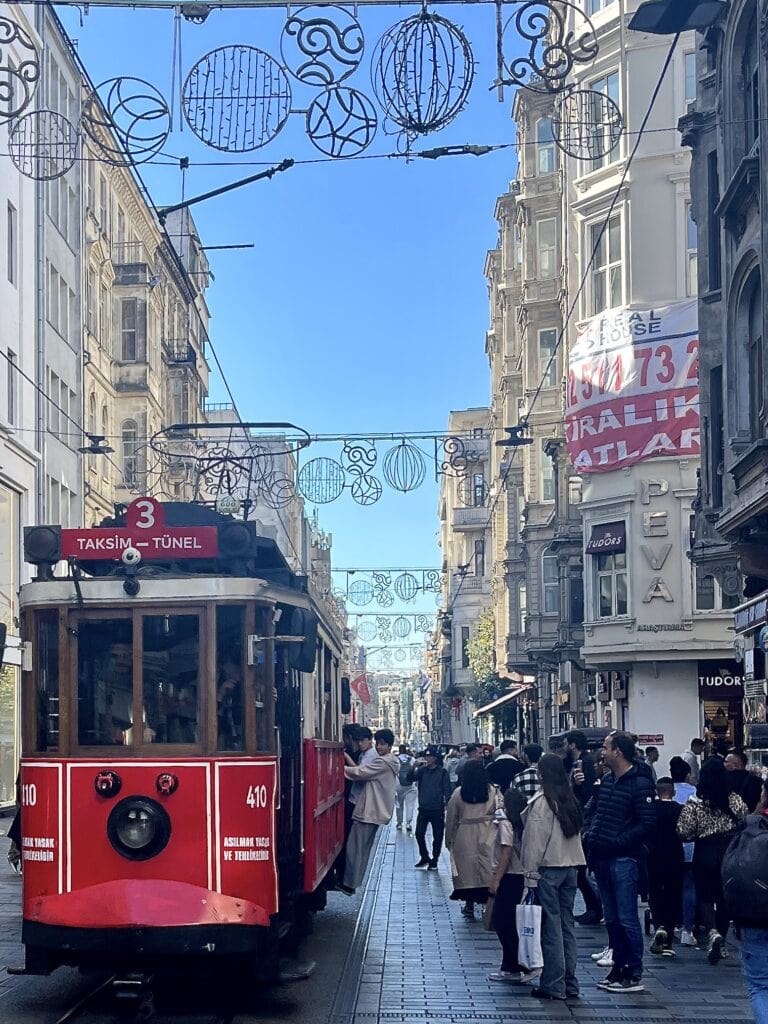
Initially, we planned to go inside, but the long queue, the 30 Euro entry fee, and the fact that payment was cash-only deterred us. Instead, we took photos from outside and continued our walk towards the Galata Bridge. Crossing the bridge was an experience on its own, with many fishermen casting their lines into the water below. The views of the Golden Horn and both sides of the city were stunning. We caught the T1 tram back to our hotel from the Eminönü tram stop on the other side of the bridge.
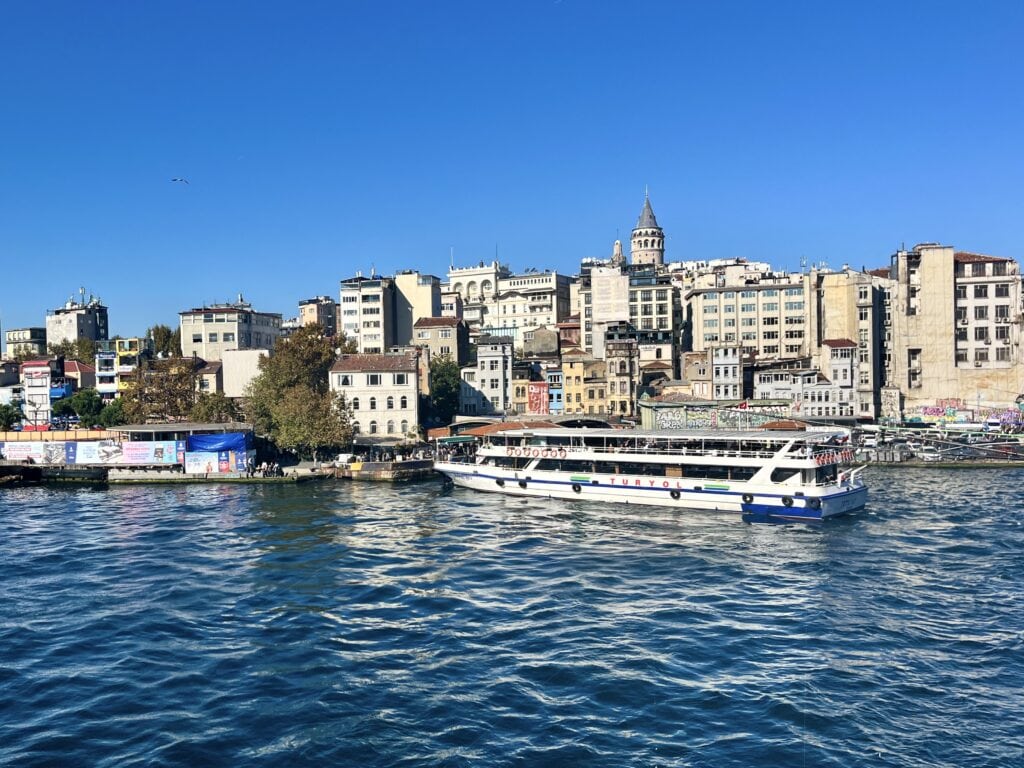
Day 3: Hagia Sophia, Basilica Cistern, Kadıköy/Moda District
Hagia Sophia
We had another early start to visit our first stop, Hagia Sophia, right at its opening hour at 9 a.m. Tickets can be purchased online by scanning a QR code, which is displayed near the entrance. The entry fee was €50 per person. A practical note: a modest dress code is required, and women must cover their heads. It doesn’t have to be a scarf; I used a hoodie, and it was acceptable. Alternatively, scarves are sold at the ticket office for €1.70.
Hagia Sophia is an iconic temple and mosque with a fascinating history. Visitors can walk along the upper inner corridors to admire its incredible beauty. I’ll leave the intricate descriptions of mosaics, arches, and corridors to the experts, as words hardly do it justice. After soaking in its magnificence, we moved on to our next stop: the Basilica Cistern.

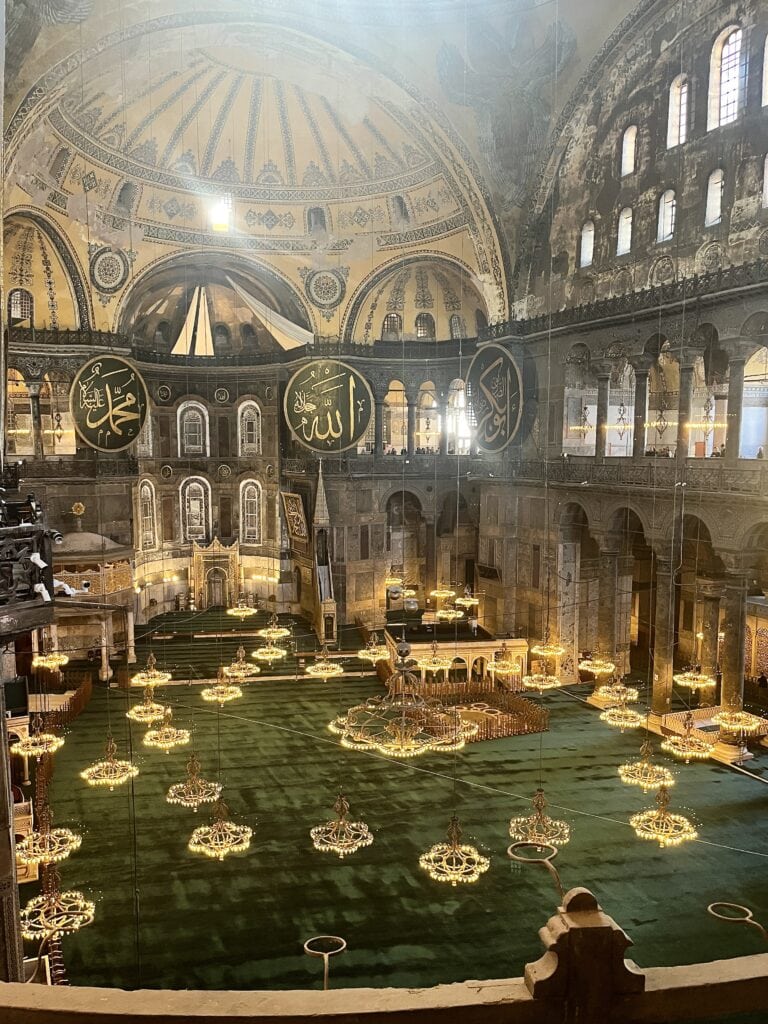
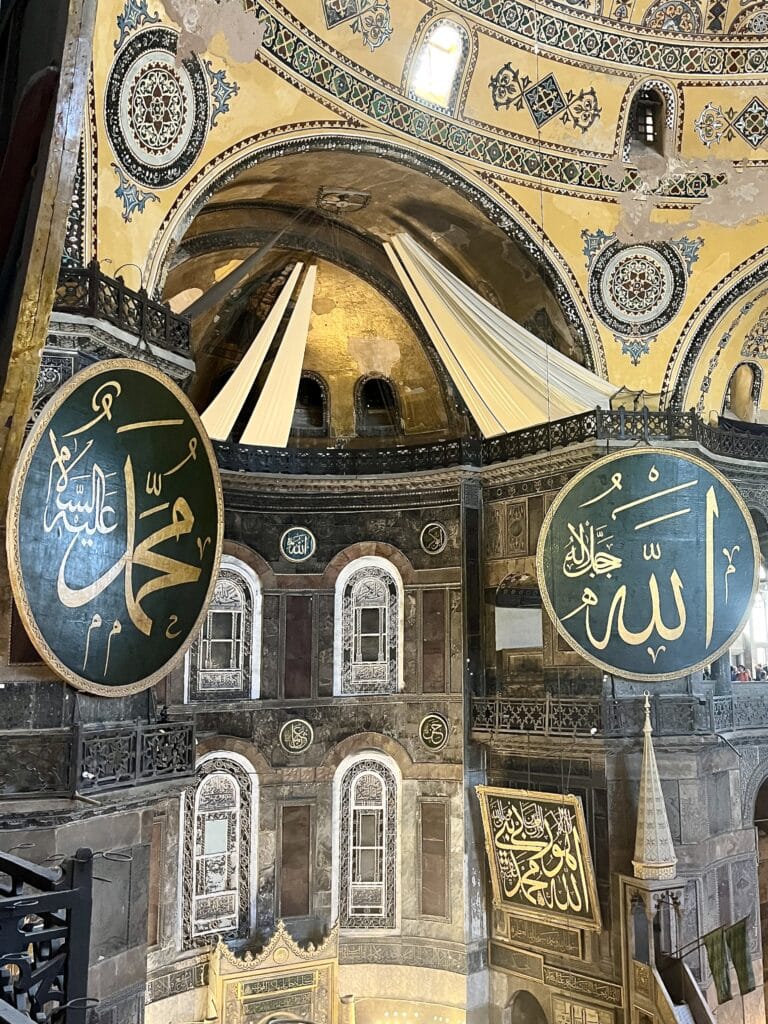
Basilica Cistern
The queue for the Basilica Cistern wasn’t too long, and the entry fee was about €25 per person. It was a breathtaking experience—a true WOW moment when we stepped inside. This massive underground water reservoir, built in the 6th century, is supported by 336 marble and stone columns. It once supplied water to the palace during both the Byzantine and Ottoman eras.
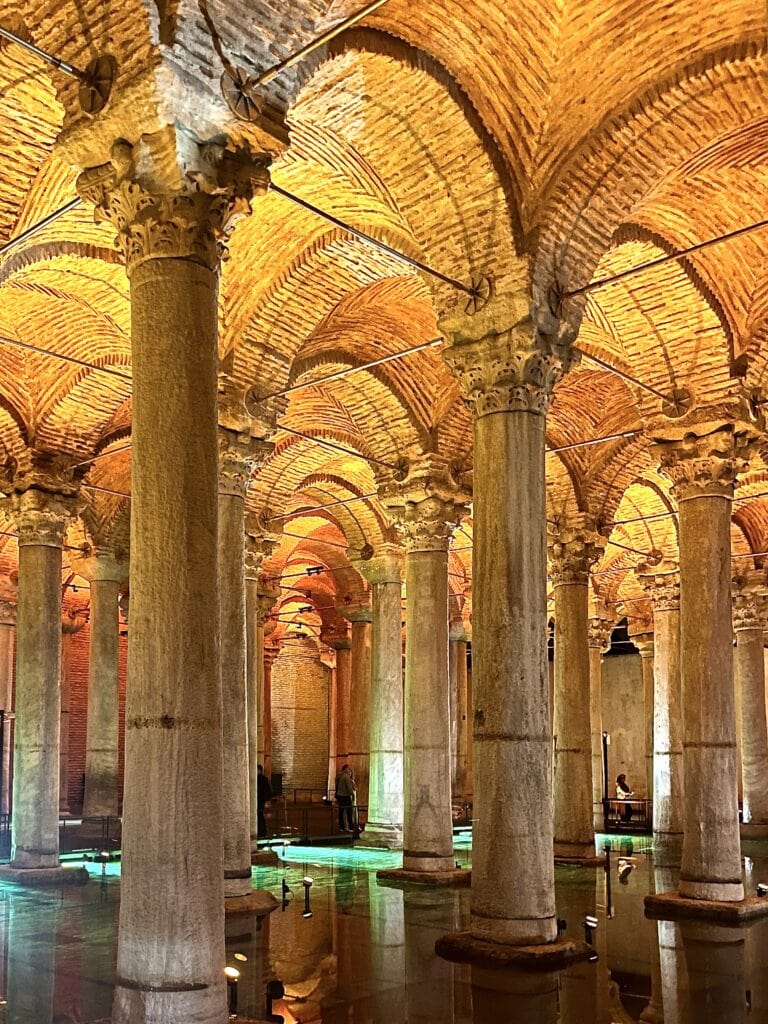
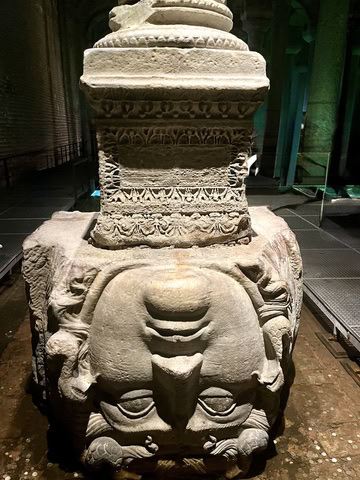

After visiting both attractions, we took a well-deserved coffee break before heading to our next destination for the day. From the Basilica Cistern, we followed the T1 tram route down to Eminönü, where we found a nice spot to sit and relax.
Kadıköy
From there, we caught a ferry to Kadıköy, a district on the Asian side of Istanbul. The ferry ride itself was a highlight, offering a scenic 20-minute cruise along the Bosphorus. The fare was about €1.50 per person, and the process was simple—just head to the Eminönü ferry terminal, tap your payment card at the gate, and you’re set.
The Kadıköy and Moda districts have an amazing vibe, full of shops, cafés, and restaurants. We walked from the ferry terminal towards the Opera Süreyya House and continued along the same street, which led us to the Moda sea promenade. The walk along the sea was delightful, and it felt like being in a completely different city.
The promenade eventually brought us back into the bustling streets, where we found a spot for a late lunch. Afterward, we took a leisurely walk—mostly along the waterfront—back to the ferry terminal. From there, we returned to Eminönü and made our way back to the hotel, wrapping up a fantastic day.
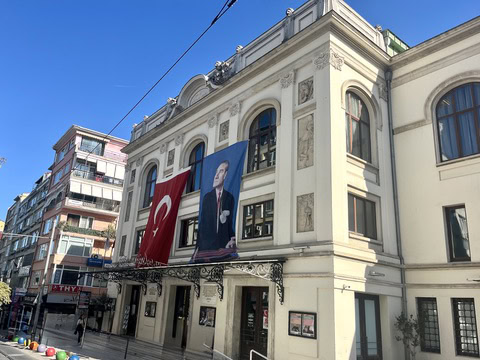
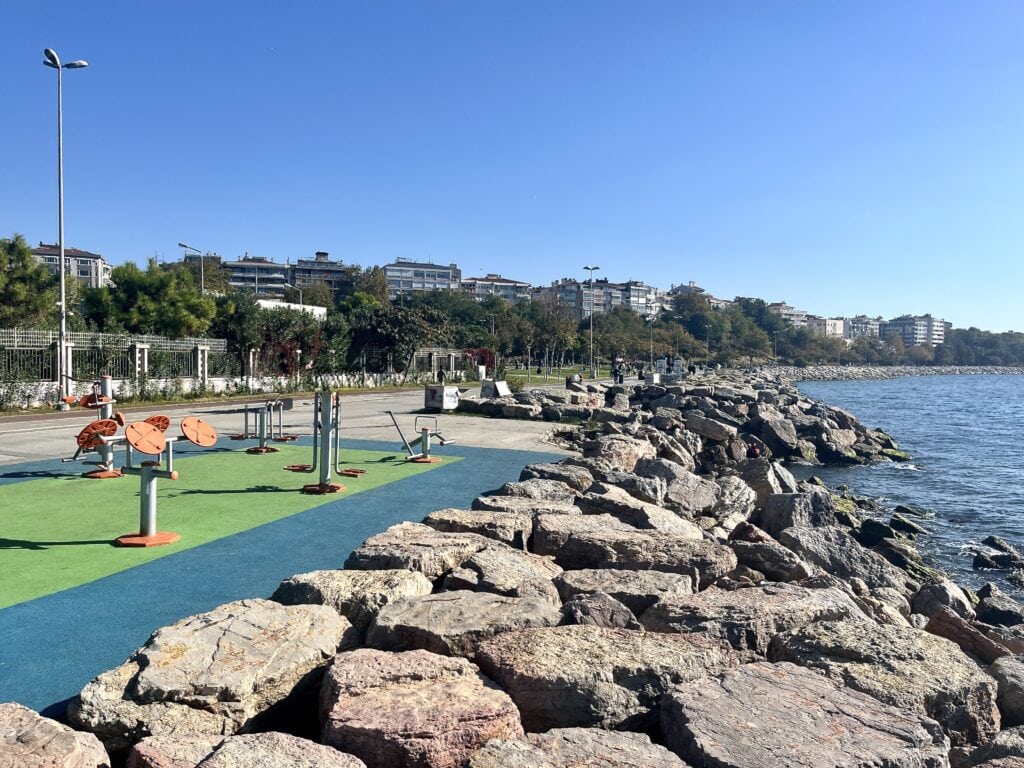
Day 4: Valens Aqueduct, Blue Mosque
Valens Aqueduct
We started the day with a walk from the hotel to see the Valens Aqueduct. Built in the 4th century, this ancient system delivered water to the people of Constantinople, later Istanbul. It’s awe-inspiring to see what people were capable of constructing so many centuries ago.
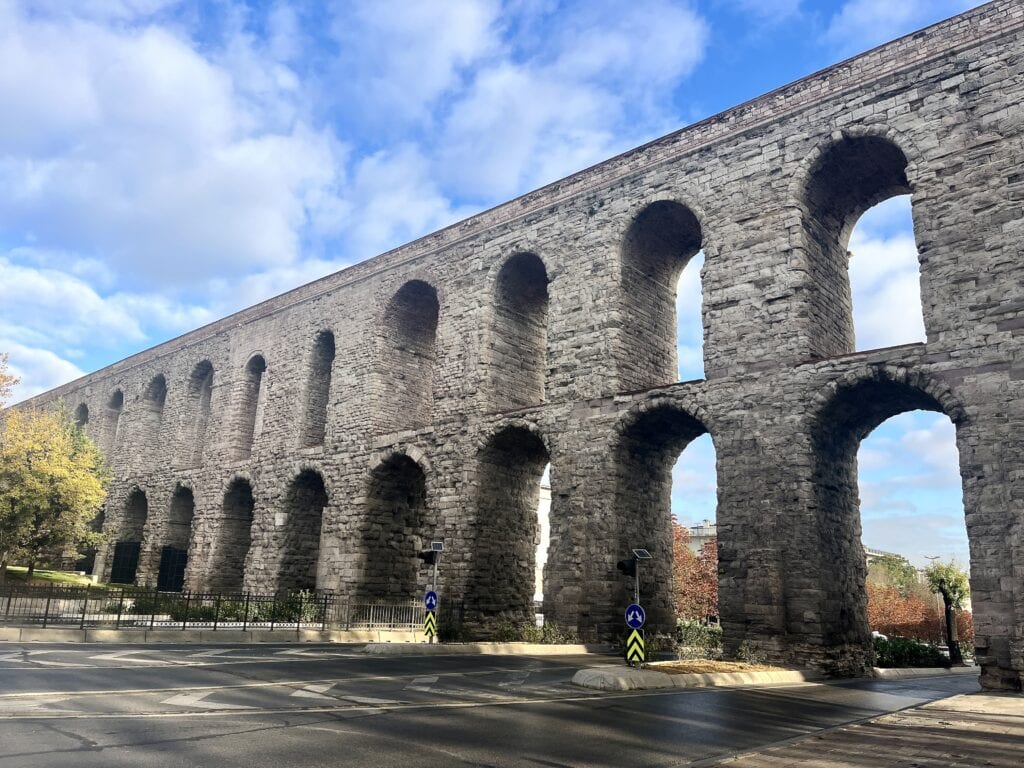
Blue Mosque
Our next stop was the Blue Mosque. We took tram T1 to Sultanahmet and walked from there. Entry to the mosque is free of charge, but as with Hagia Sophia, modest clothing is required, and women must cover their heads. Upon entering the mosque, we were asked to remove our shoes and walk on the carpets barefoot. The Blue Mosque, built at the beginning of the 17th century, was designed to complement Hagia Sophia and symbolize the power of the Sultan.
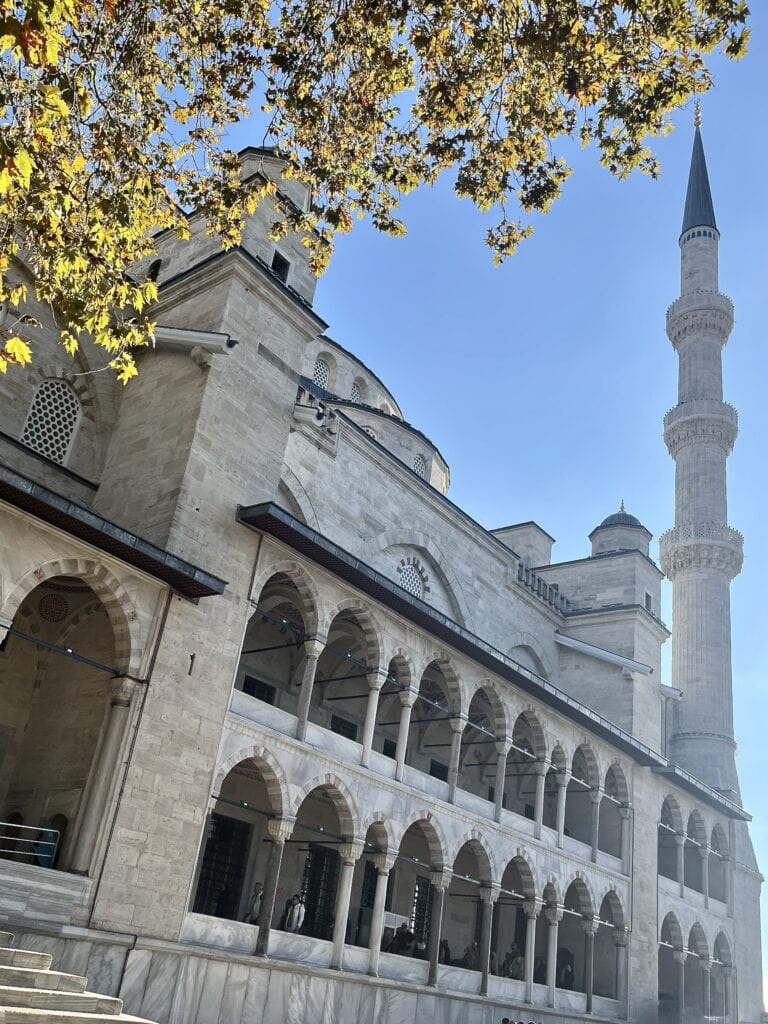
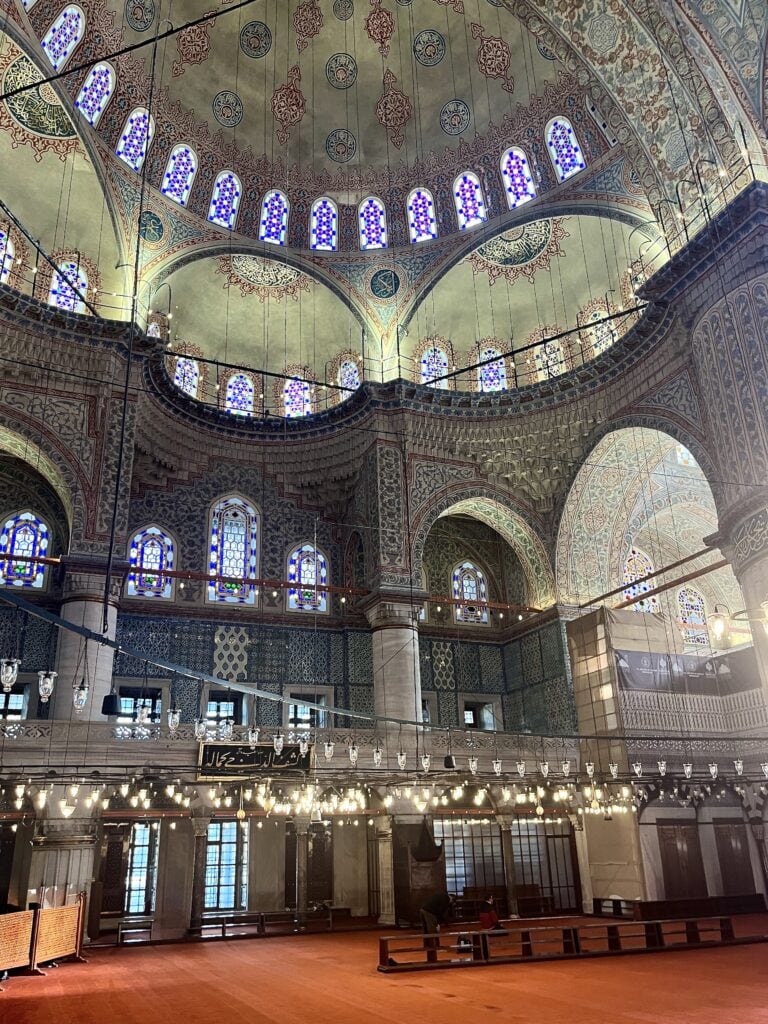
Walk throught the city
After visiting the mosque, we took tram T1 to Kabataş and walked towards the Dolmabahçe Palace. The palace is a truly impressive sight, but unfortunately, it was closed because it was Monday. I hadn’t checked the schedule in advance, and this mistake taught me a valuable lesson—I’ll always confirm opening days and times from now on!
Since we couldn’t visit the palace, we decided to walk towards Taksim Square and browse some shops along the way. After lunch, we made our way to the Camondo Stairs. We had passed by this staircase on Day 1 without realizing its significance, as many people were taking photos there. I later learned that it is a beautiful Art Nouveau-style staircase built by the prominent Jewish Camondo family in the second half of the 19th century. Unfortunately, I couldn’t capture a good photo of the staircase, as it was constantly crowded with people—perhaps an early morning visit would be better for photography.
We then continued towards the Galata Bridge, crossed it, and slowly walked back to the hotel. On the way, we passed through Bayezid Square, which we frequently encountered due to our hotel’s proximity. The square is home to several notable landmarks:
- Bayezid II Mosque
- An impressive arch that serves as the entrance to Istanbul University
- A library adjacent to the university
- And, of course, the Grand Bazaar, which is nearby
Day 5: Istanbul – Pamukkale
It was the right moment to leave Istanbul behind and start exploring other parts of Turkey. With such a vast country, I had to decide which areas to visit and which to save for another time. The next few days reflect what I chose.
We started early to head back to the airport to pick up our rental car. While I tried to find a car rental service that would deliver to the hotel, I wasn’t successful. Although renting from a downtown office was an option, I decided against it for these reasons:
- Limited office hours compared to the airport’s 24-hour service.
- Extra fees for picking up downtown and returning to the airport. These fees exceeded the cost of an Uber to the airport.
- I would still need to arrange transportation to the downtown office anyway.
In the end, we took an Uber to the airport, rented the car, had a coffee, and were ready to hit the road to Pamukkale.
The drive, though long, was incredibly smooth. I have to admit, I was genuinely impressed by Turkey’s highways. The majority of the journey was on wide 3- or 4-lane highways without any delays. Petrol stations are frequent and well-equipped, often featuring not only fuel and small shops but also Starbucks and other dining options. Truly impressive!
We arrived in Pamukkale mid-afternoon—just in time to settle into our hotel, take a short walk, and enjoy an early dinner.
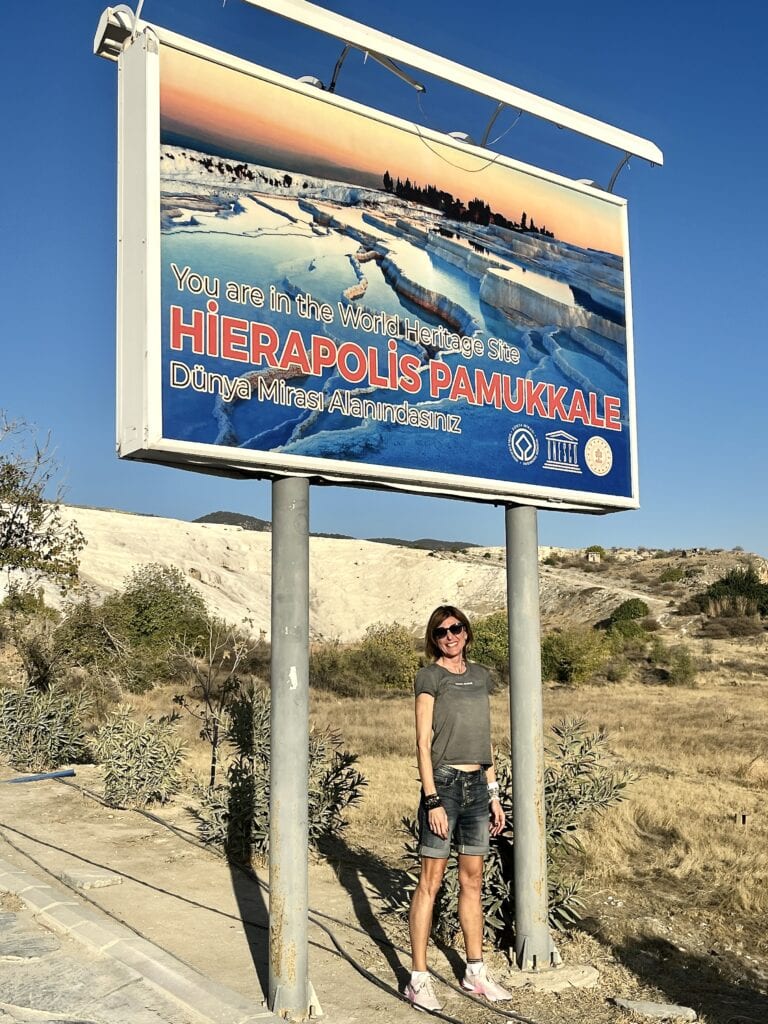
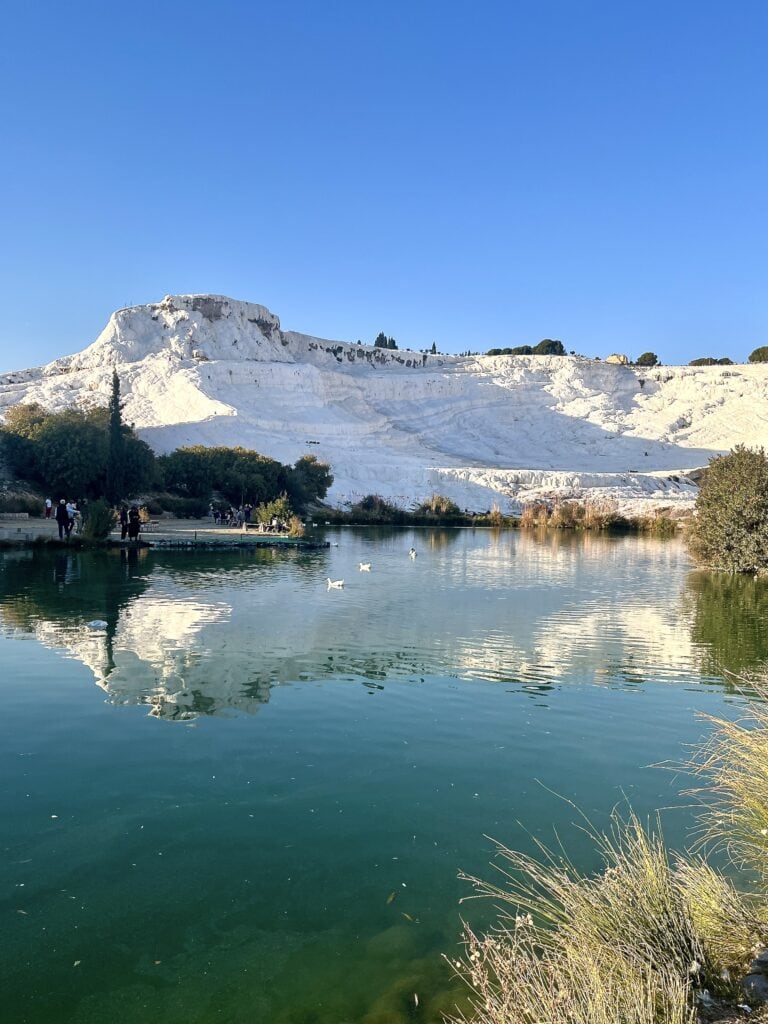
Day 6: Pamukkale – Hierapolis, Travertines, and the Ancient Cleopatra Pools
Let’s start with some practical information. There are two gates to enter the site: the North and South gates. When planning the trip, I found advice to enter through the South gate, and it was spot on. The South gate is about 2 km from the village, with a parking lot in front—though not a huge one. As always, we started early to avoid the crowds, so parking wasn’t an issue.
The entry fee for Hierapolis and the Travertines is €30 per person. If you want to swim in the Ancient Cleopatra Pool, it’s an extra charge, even though the pool is located within the complex. You cannot access the pool separately from the rest of the site.
The ticket allows single entry only. Since it didn’t make sense to carry a bag with a towel and swimming costume while exploring, I asked at the ticket counter if they would allow me to step out to retrieve my bag from the car later. The staff assured me it would be fine, so I left it behind.
Hierapolis
Hierapolis is the remains of an ancient Greek city renowned for its hot springs, which were used as a spa as early as the 2nd century BC. Famous visitors like Cleopatra and Marcus Aurelius once walked these grounds.
The highlight for me was the theater—a beautifully preserved example of ancient Roman architecture. After exploring the hilltop ruins, we gradually made our way down to the Travertines.
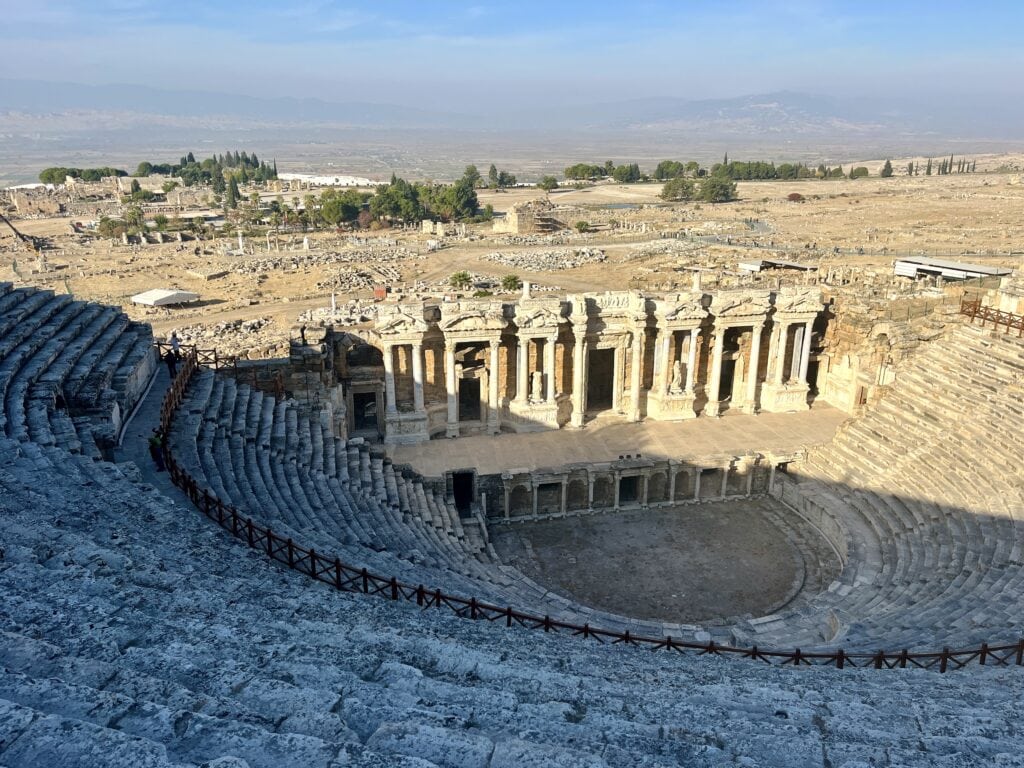
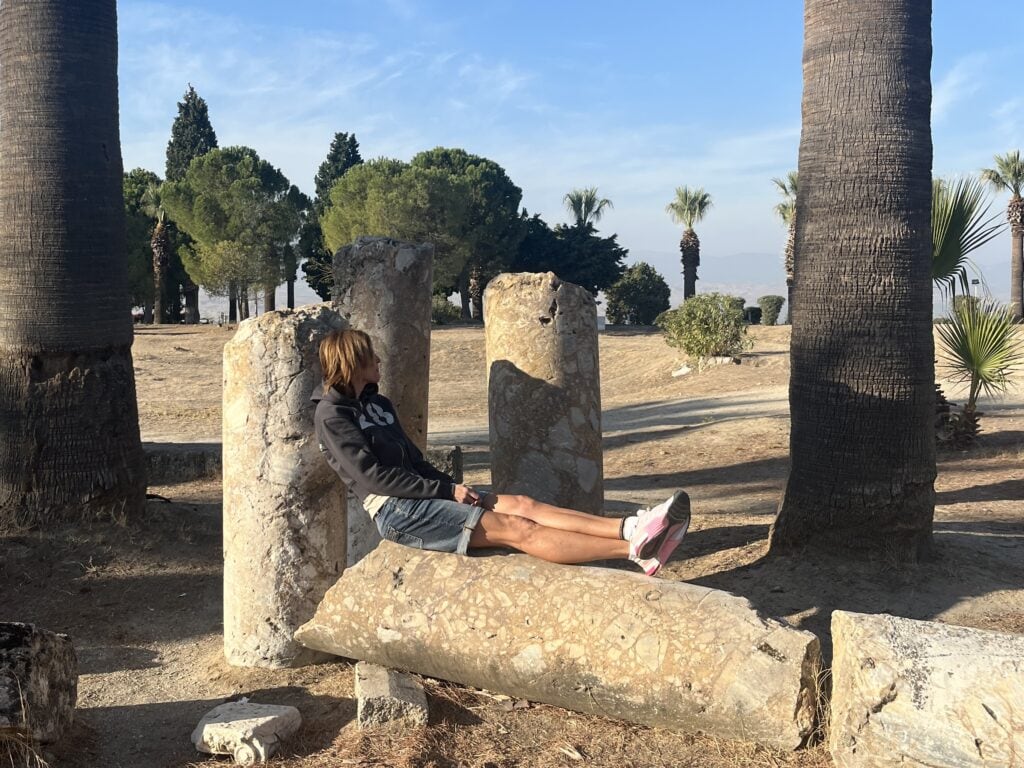
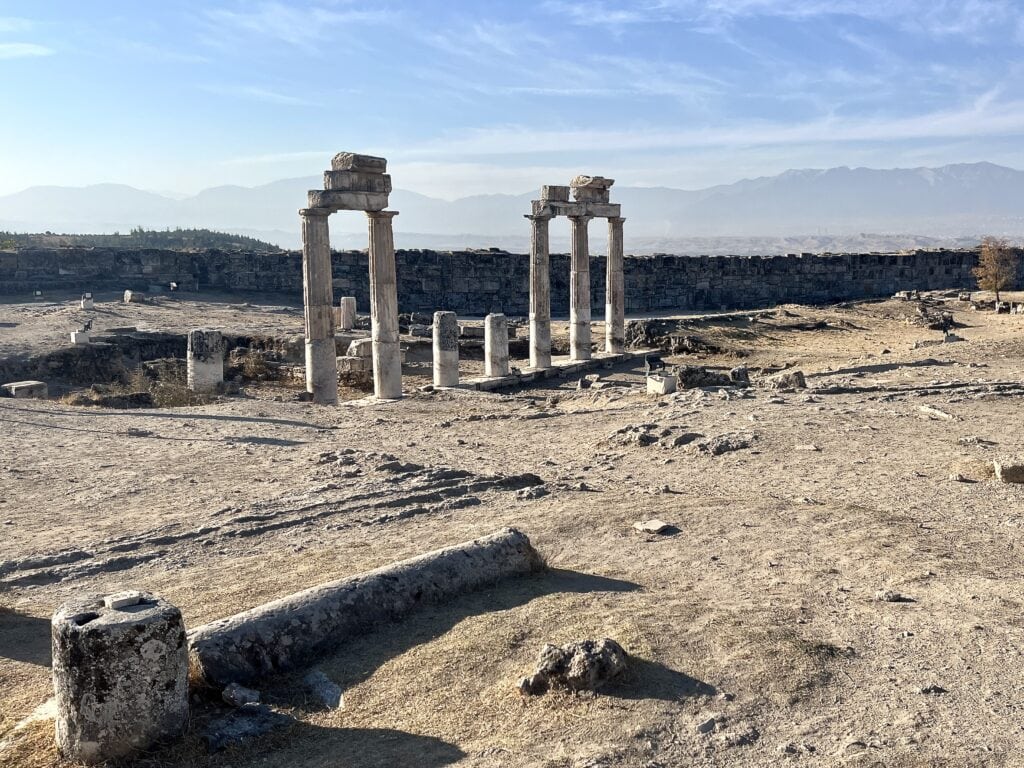
Travertines
The stunning white terraces of the Travertines were formed by calcium-rich mineral water flowing over the cliffs. Walking around these natural cascades was a real pleasure and offered incredible views.
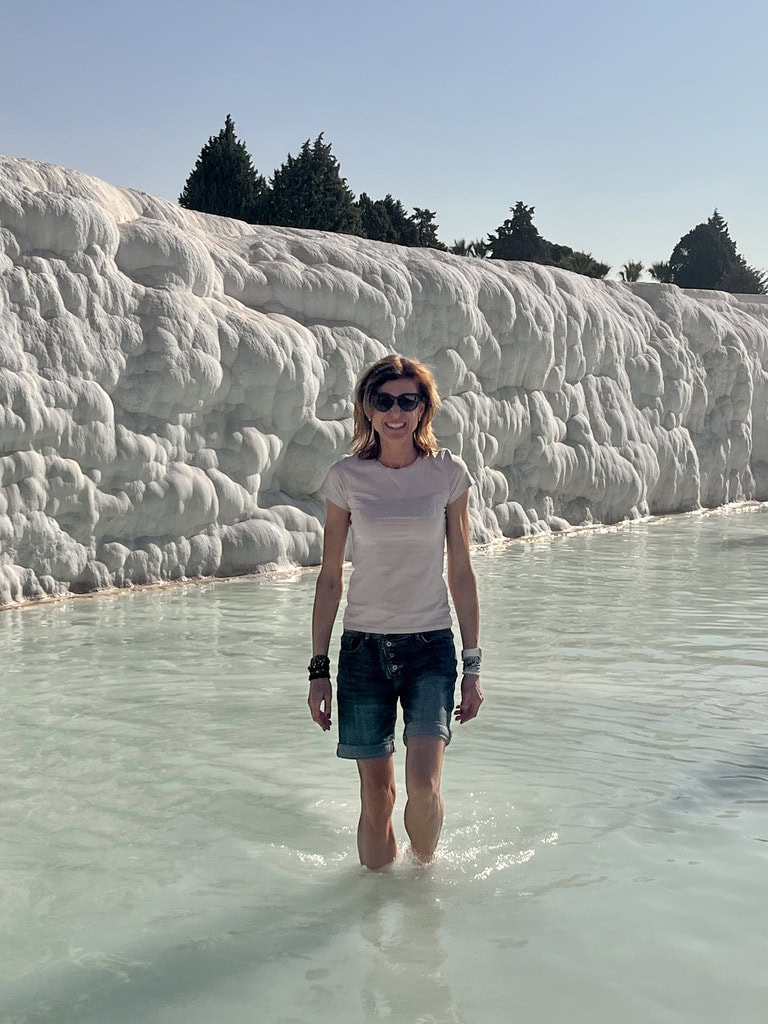

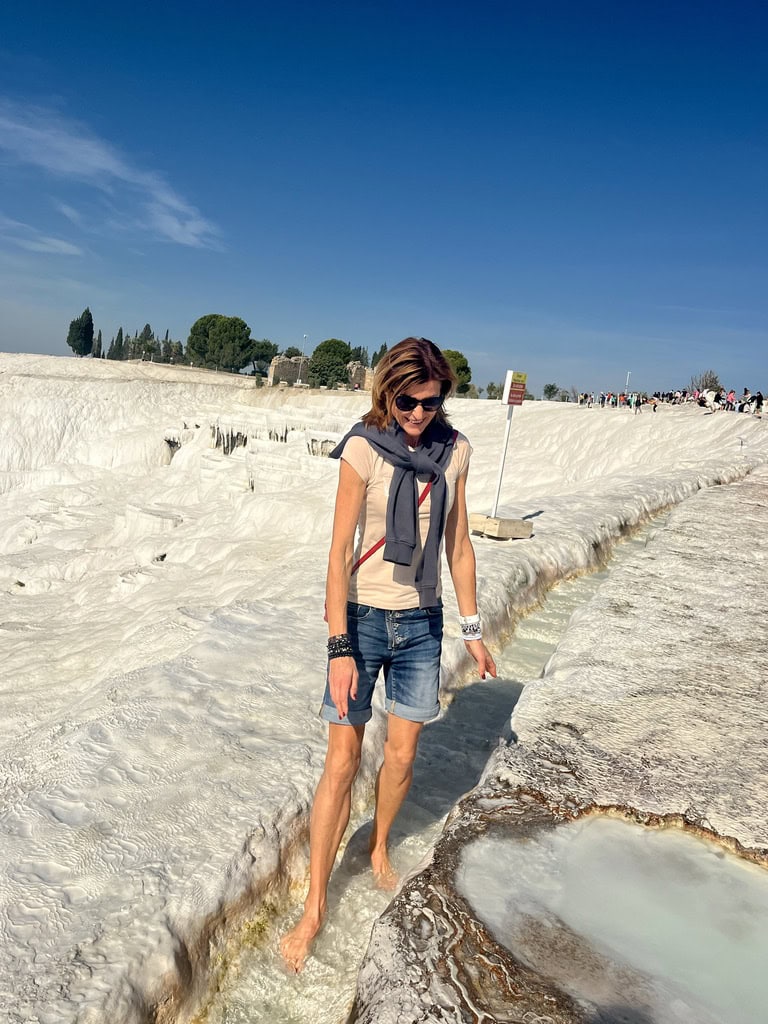
After enjoying the beauty of the Travertines, it was time for a swim in the Cleopatra Pool.
Cleopatra Ancient Pool
We returned to the South gate, where I asked security to let me out to retrieve my bag from the car. At first, it seemed like they wouldn’t allow it! A rather arrogant tour guide tried to tell me I’d have to pay €30 to re-enter. After a bit of negotiation (and perhaps a mild tantrum), they agreed to let me back in.
The Cleopatra Pool is located at the heart of the site. Entry costs an additional €10 per person. Upon entering, we headed to the changing cabins and lockers, but there was a catch: lockers cost an extra 50 TRY, and they only accepted cash.
As someone who pays with cards everywhere to avoid carrying cash, this was a surprise. After explaining my situation, the staff eventually gave me a locker key without charging me.
We changed into our swimwear and headed to the pool. To my surprise, the ticket allowed single entry into the pool—no going in and out.
The water was wonderfully warm, and we relaxed among ancient stones from the Temple of Apollo, which had fallen into the pool after an earthquake. Soaking in the same place as Cleopatra was a fantastic experience and the perfect way to end the day.
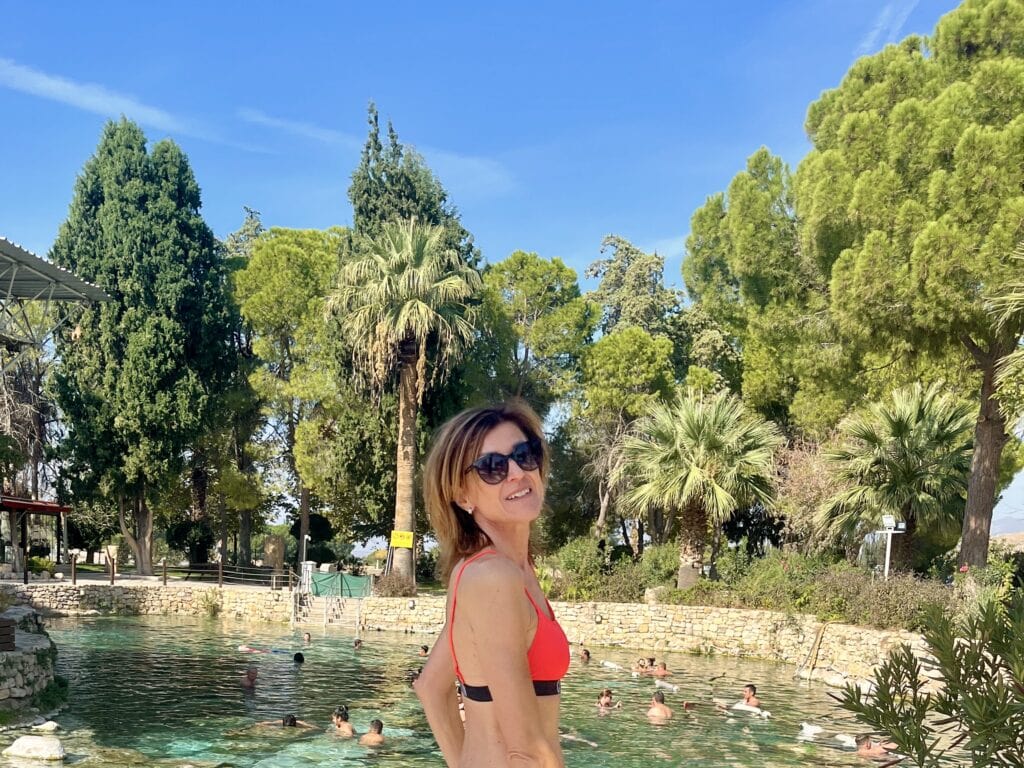
Day 7: Pamukkale – Ephesus – Foça
Back on the road, we packed up our car and drove from Pamukkale to Ephesus, which was approximately a two-hour drive.
Ephesus
Ephesus is another incredible ancient city to explore. Once one of the most important ancient Greek cities in Asia Minor and a major seaport hub, it offers a fascinating glimpse into the past. The entry fee is €40 per person, excluding the audio guide. We decided to skip the guide as there are large signs throughout the site explaining the major landmarks.
One feature not to miss is the “Visual Experience” hall, located in the first quarter of the site. Initially, we almost skipped it, assuming there would be an additional charge. Thankfully, we decided to investigate and discovered it was included in our entry ticket. The experience was absolutely worth it! Equipped with headphones, we joined a group and enjoyed a visually stunning presentation of Ephesus’s history.
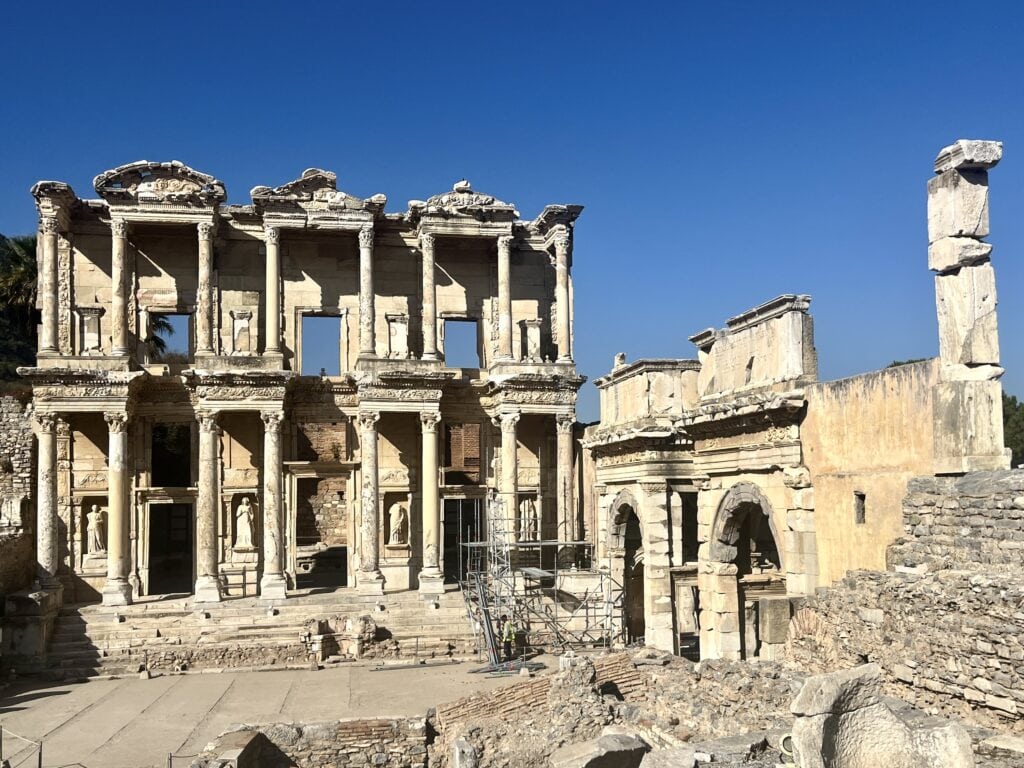

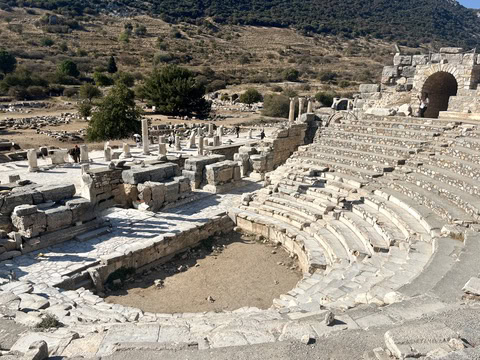
It’s also worth mentioning that Ephesus was the site of the Temple of Artemis, one of the Seven Wonders of the Ancient World. While the temple is not located within the main archaeological site, it is just a five-minute drive away. Despite being warned that there isn’t much left to see, we decided to visit. The truth is, there’s very little remaining—almost nothing—but knowing we had seen the site gave us peace of mind, as we would have regretted skipping it otherwise.
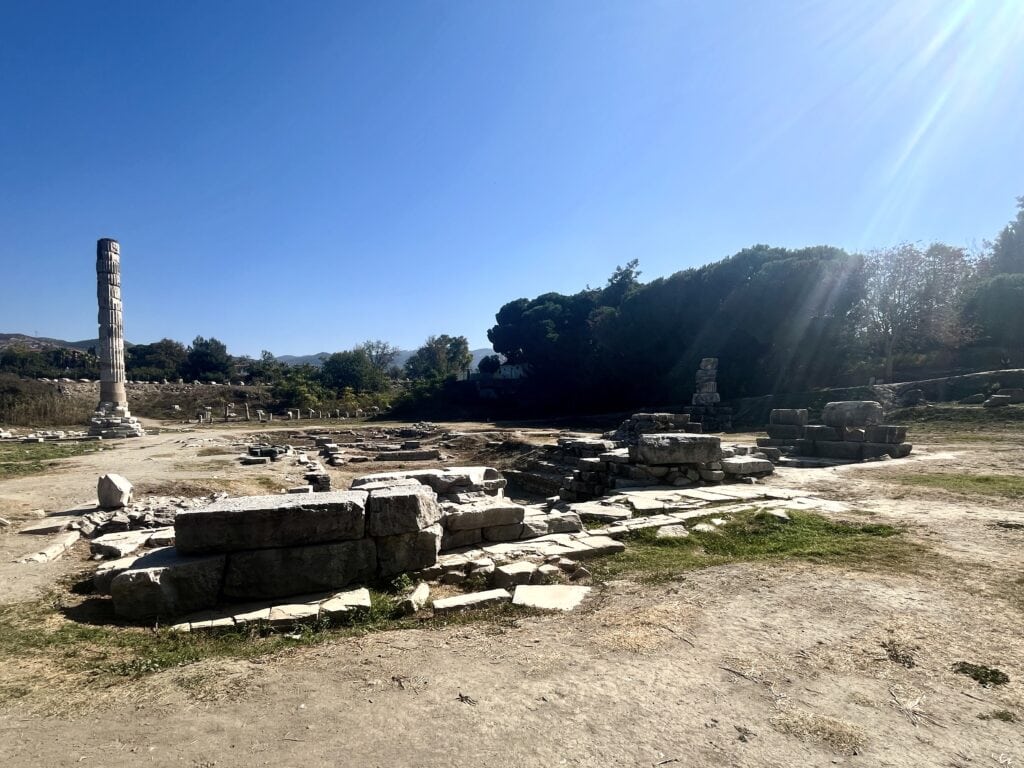
Foça
After spending about half a day in Ephesus, we set off in the early afternoon for our final destination of the day: the seaside town of Foça. The drive took less than two hours, allowing us to arrive in time for a leisurely seaside walk and a relaxing dinner with a beautiful view of the sea.
Day 8: Foça
Foça is a small seaside town with a completely different vibe compared to the bustling streets of Istanbul. It felt calm, easygoing, and pleasantly uncrowded—though this may have been due to our visit being at the end of October. I imagine it’s much busier during the summer months.
Our day was very relaxed. We enjoyed a leisurely breakfast at our hotel, followed by a long walk along the seaside promenade and through the narrow streets of the town. After a coffee break, we picked up the car and drove along the coastline for about 15 kilometers, stopping at various sea-view points to take in the stunning scenery.
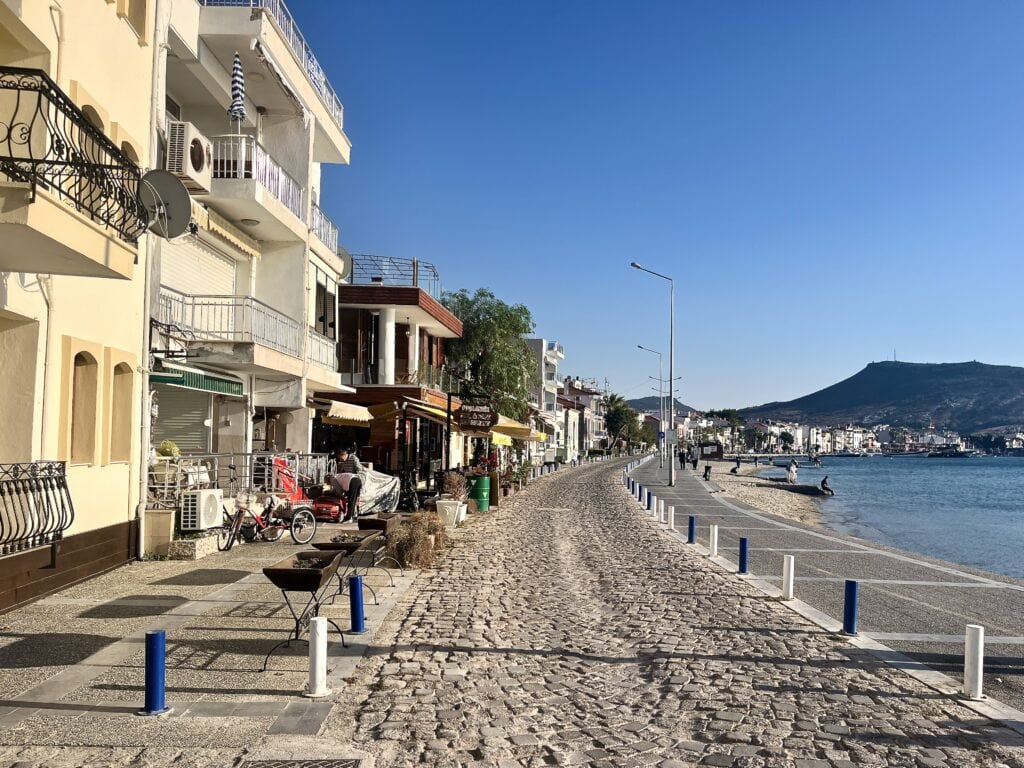
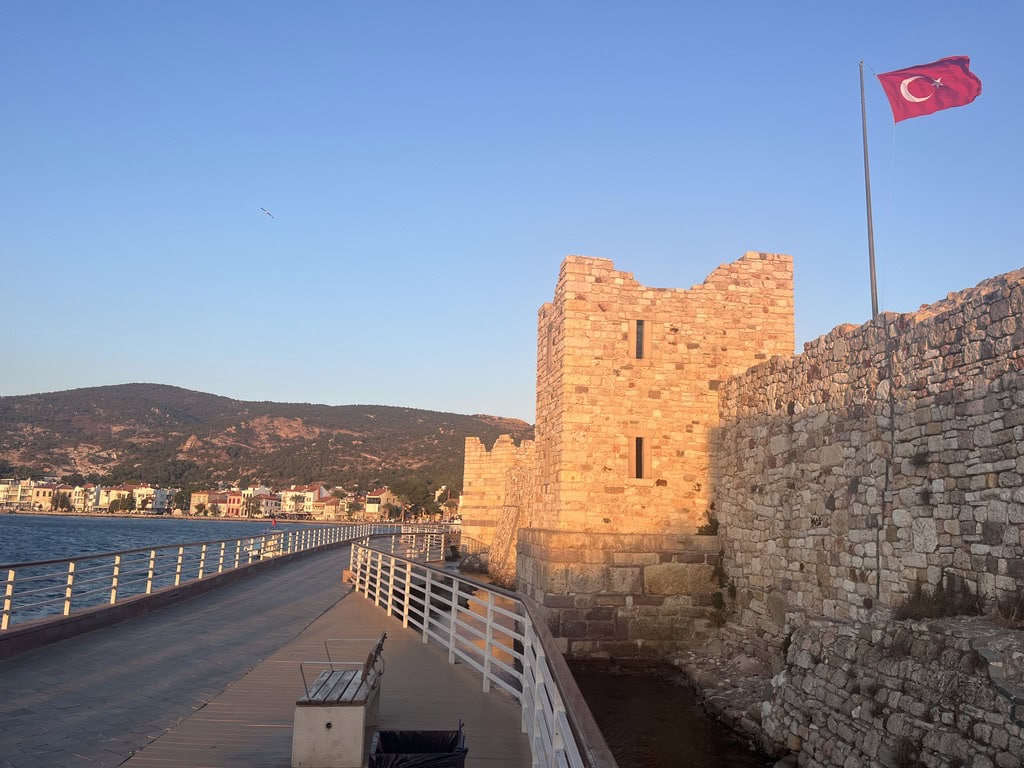
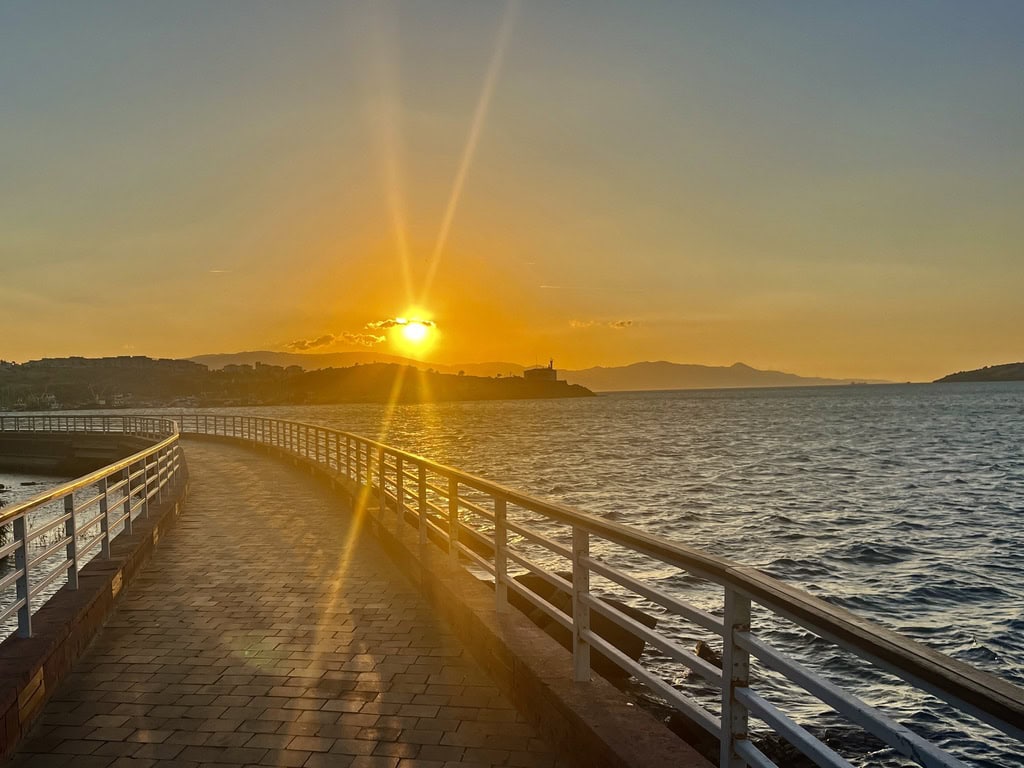
Day 9: Foça – Bursa
Our final stop on this road trip was Bursa, a city that came highly recommended as a must-visit. It also seemed like the perfect stopover before returning our car at Istanbul Airport and flying out of Turkey.
During my research, I found a mention of Cumalıkızık, a small village on the outskirts of Bursa that is a UNESCO World Heritage site. It immediately made its way onto our itinerary. Upon arrival, we parked in a large lot and walked into the village. It’s a charming place with cobblestone streets and quaint shops where locals sell handmade products. However, it’s important to note that most vendors only accept cash, so if you plan to make purchases, come prepared. Even without shopping, wandering through the village was really enjoyable and offered a glimpse into traditional Turkish life.
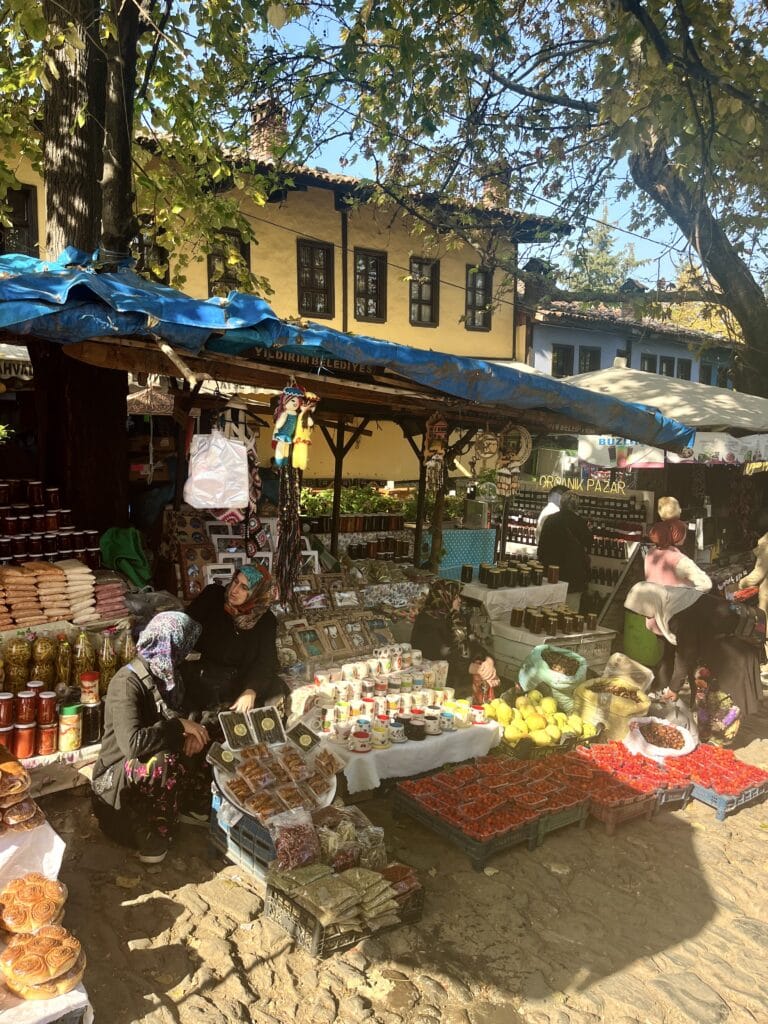
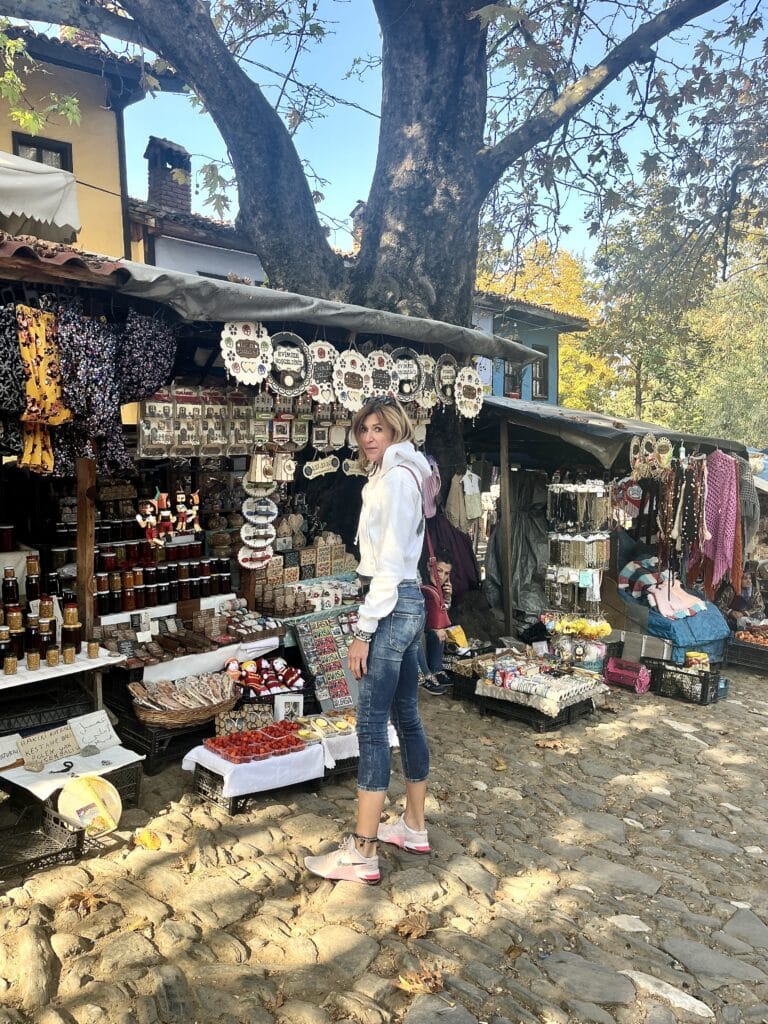
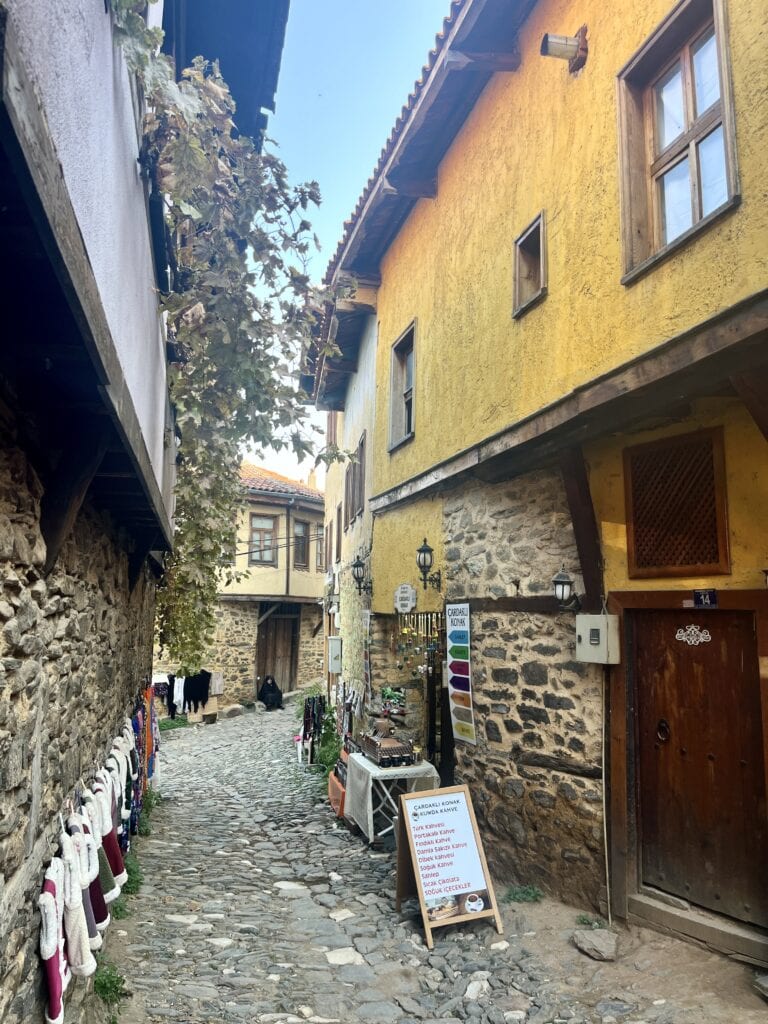
We spent about 1.5 hours in Cumalıkızık before heading to our hotel, which I had chosen for its central location and parking availability. After checking in, we decided to visit one of Bursa’s main attractions, the Grand Mosque. On the way, we stopped at a restaurant for a late lunch.
As we got closer to the mosque, the streets grew busier—it was Saturday afternoon, and the city was teeming with people. We found the Grand Mosque but only saw it from the outside, as it was prayer time and the area was incredibly crowded. Our next stop was the Grand Bazaar, a lively market where you can find just about anything: gold jewelry, shoes, fake designer handbags, scarves, spices, chocolates, and more. We wandered around for a bit, soaking in the vibrant atmosphere.
Eventually, the crowds became overwhelming, so we decided to head back to the hotel. In summary, I’m glad we included Bursa in our itinerary, but it’s not a city I’d go out of my way to revisit. It served as a convenient stopover, but it didn’t leave a lasting impression on me.
Day 10: Bursa – Istanbul. The end of my Turkey Road trip
And that marked the end of our road trip through Turkey. After enjoying breakfast at our hotel, we embarked on the final drive from Bursa to Istanbul Airport. The journey went smoothly, and we returned our rental car without any delays. From there, we made our way to the International Departures terminal, ready to head back home with wonderful memories of our trip.
